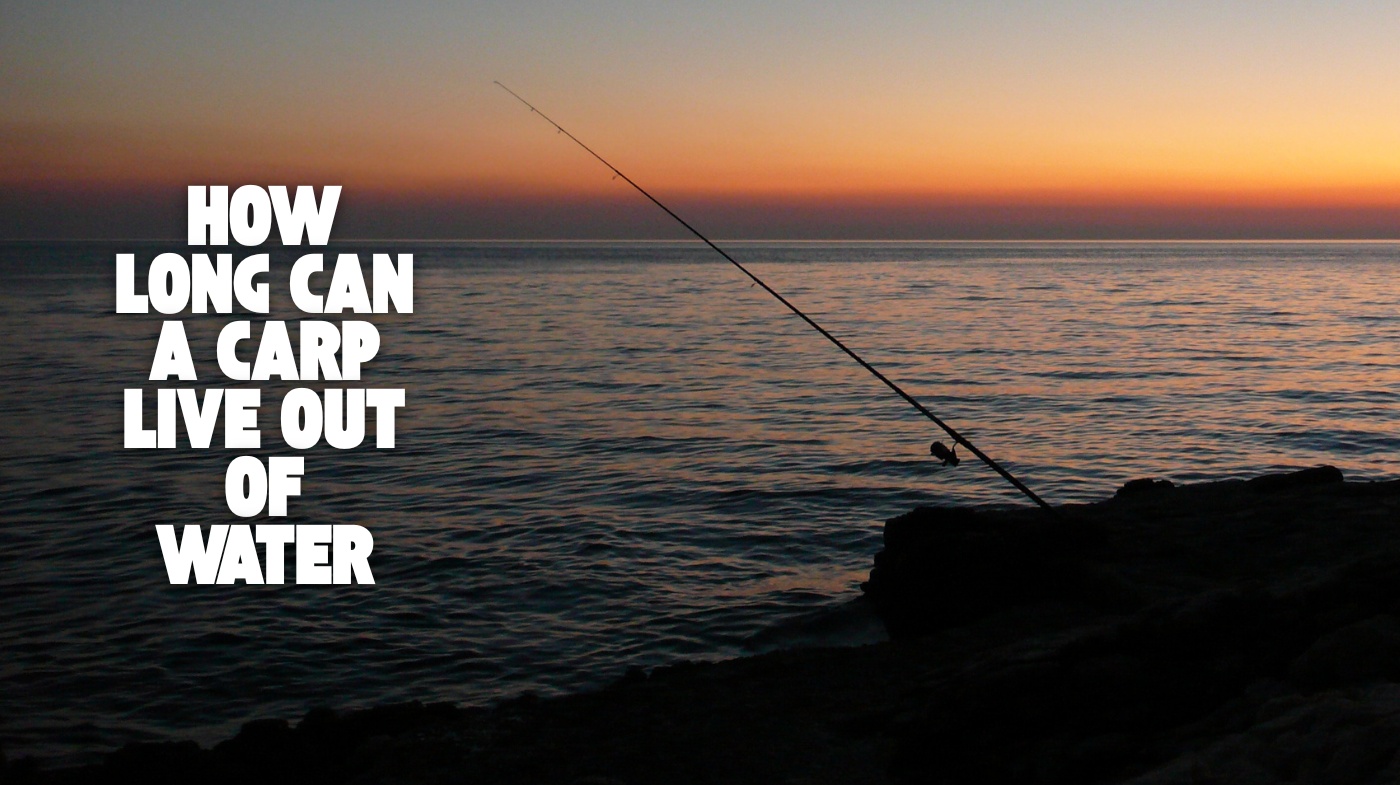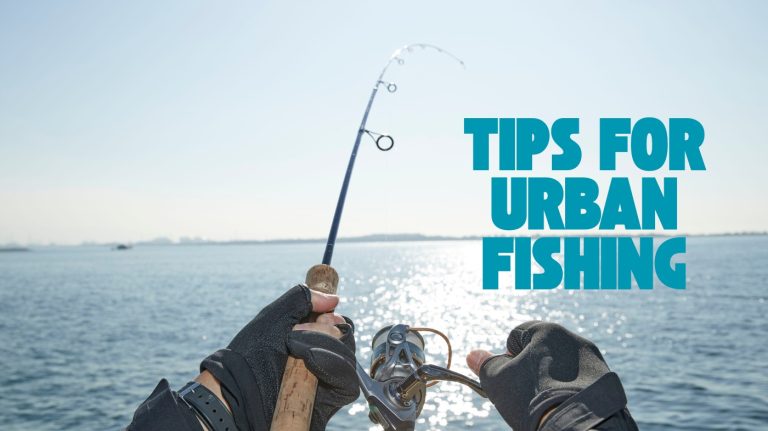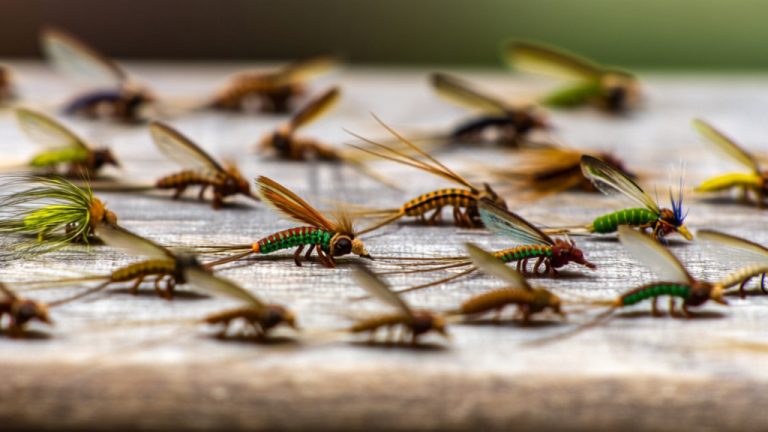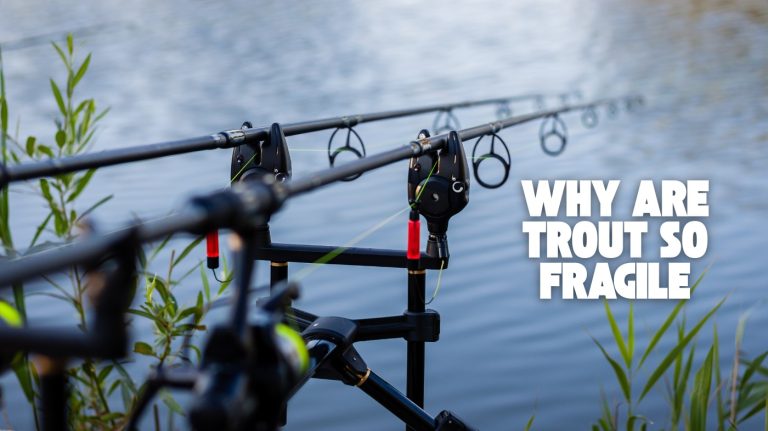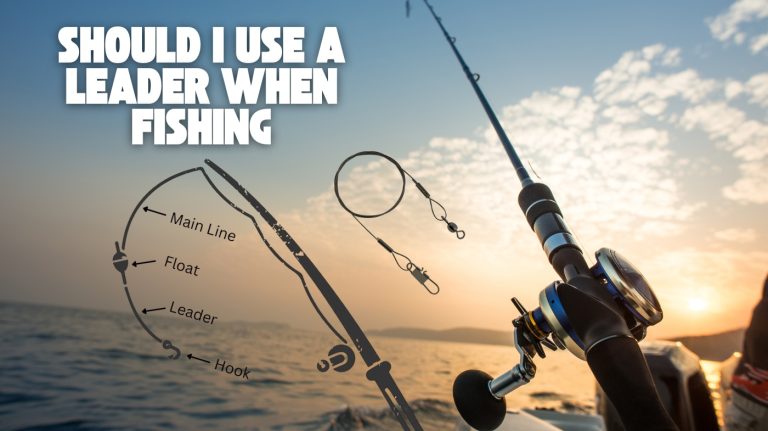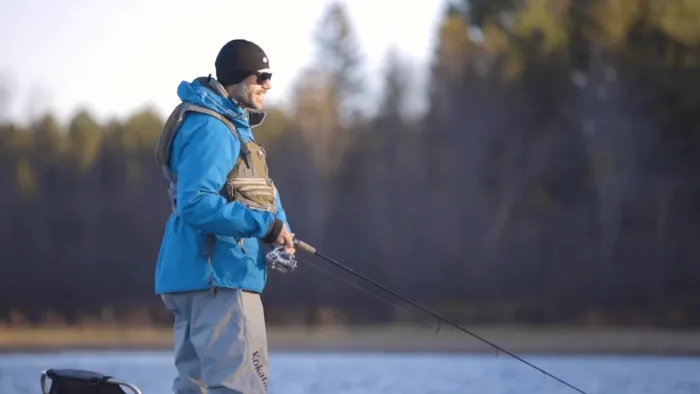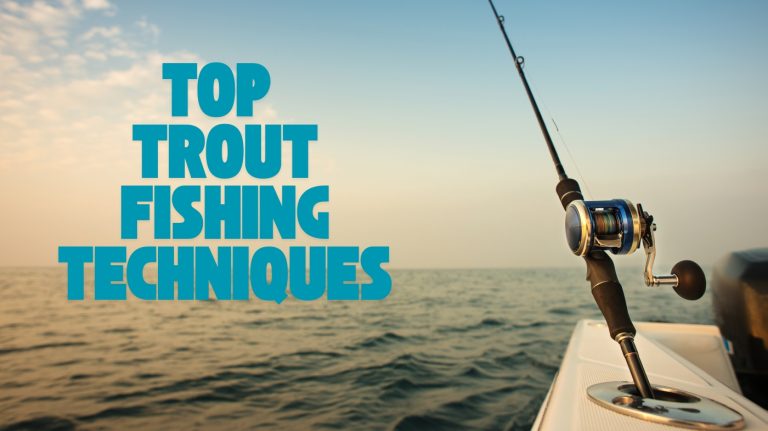How Long Can a Carp Live Out of Water? Factors That Matter
You can expect a carp to survive out of water for about 30 to 60 minutes under ideal conditions, though some species tolerate up to 1–2 hours.
Temperature and humidity heavily influence survival. Cool, moist environments extend endurance by slowing metabolism and reducing dehydration.
Handling stress, air exposure duration, and maintaining skin moisture critically affect their physiological state. Proper care can greatly improve outcomes.
Understanding these factors reveals why carp manage limited air exposure better than many fish.
Key Takeaways
- Carp generally survive out of water for 30 to 60 minutes, with some enduring up to 1–2 hours under optimal conditions.
- Cooler temperatures and high humidity significantly extend carp survival time by reducing dehydration and metabolic stress.
- Prolonged air exposure and rough handling increase stress, dehydration, and mortality risk, reducing survival duration.
- Maintaining moisture on the carp’s skin and minimizing air exposure during handling are critical for survival.
- Species differences and environmental factors like temperature influence carp’s tolerance to being out of water.
Typical Survival Duration of Carp Out of Water
Although crucian carp can endure months underwater without oxygen by drastically reducing brain energy demands, common carp survive out of water for only a few minutes due to their reliance on oxygen intake through gills and vulnerability to dehydration.
Common carp possess some tolerance to low oxygen, achieved by decreasing sodium-potassium pump activity in the brain to conserve energy. However, unlike crucian carp, they can’t sustain anoxic conditions for extended periods.
This is because water temperature, rather than oxygen levels, primarily controls the activity of the sodium-potassium pump. When handling carp, it is important to be aware that stress and injury increase significantly with prolonged air exposure.
When you handle carp, minimizing air exposure to under three minutes is vital. Prolonged time out of water escalates stress, injury risk, and mortality.
Keeping carp wet during handling preserves their protective mucus layer, which is essential to improving survival chances after brief air exposure.
Impact of Temperature and Humidity on Carp Survival
When you consider carp survival out of water, temperature and humidity play critical roles in determining how long they can endure air exposure.
Higher temperatures accelerate dehydration and metabolic stress, reducing survival time. Cooler temperatures slow metabolism, extending endurance. The ability to maintain balance under varying conditions is similar to how a 5 wt fly rod offers versatility in delicate environments.
Humidity directly affects water loss; high humidity slows evaporation from skin and gills, decreasing dehydration stress. Conversely, low humidity increases water loss, accelerating fatal damage.
The ideal conditions combine low temperature and high humidity, which suppress metabolic demand and maintain moisture balance. Carp have specialized adaptations that help them extract oxygen efficiently and tolerate low oxygen levels, which supports their extended survival out of water.
Abrupt temperature spikes heighten mortality risk, whereas gradual acclimation can improve survival.
Managing these environmental factors during carp handling, such as ensuring cool, moist conditions, maximizes their ability to withstand air exposure. Therefore, controlling both temperature and humidity is essential for prolonging carp viability outside water.
Physiological Mechanisms Enabling Carp to Withstand Air Exposure
Understanding how temperature and humidity influence carp survival outside water sets the stage for examining the physiological mechanisms that allow these fish to endure air exposure. Proper care and maintenance, such as basic or spot cleaning methods, can help ensure equipment used in handling carp remains in good condition.
Carp utilize their swimbladder as an auxiliary respiratory organ to support gas exchange when submerged oxygen is unavailable. This adaptation helps maintain oxygen uptake and CO2 excretion via an incomplete gas exchange mechanism.
Carp repurpose their swimbladder to aid oxygen uptake and carbon dioxide release when underwater oxygen is scarce
Cardiovascular adjustments sustain oxygen transport despite environmental hypoxia. Notably, carp show high hemoglobin oxygen affinity, facilitating oxygen absorption even in low oxygen conditions. Metabolically, carp reduce ATP demand by lowering metabolic rate and rely on extensive liver glycogen stores for anaerobic glycolysis.
They may also convert lactate to ethanol to prevent toxicity. Acid-base regulation involves compensating rises in blood CO2 and declines in pH, with the pneumatic duct facilitating gas clearance.
Collectively, these adaptations enable carp to preserve essential organ function and energy homeostasis during limited periods of air exposure.
Effects of Handling Stress on Carp Longevity Out of Water
Hey there! Did you know that how we handle carp can really affect their chances of survival when they’re out of water? It’s all about managing that handling stress.
If we provide gentle support and help them avoid too much struggling, we can actually reduce the physiological strain on their bodies. This is super important because it helps keep their cardiovascular and immune systems functioning well.
Carp have a remarkable ability to survive in low oxygen environments due to their high oxygen affinity blood, which helps them endure brief periods out of water.
Stress Impact on Survival
Although carp can survive out of water for short periods under moist, cool conditions, handling stress considerably reduces their survival time by accelerating physiological decline.
When you handle carp roughly or for extended periods, their metabolic rate and oxygen demand spike, depleting glycogen reserves essential for anaerobic metabolism. Elevated cortisol from stress impairs immune function, increasing mortality risk. Using specialized glare reduction techniques in fishing sunglasses can help anglers minimize handling time by improving underwater visibility and reducing fish distress.
You’ll notice stressed carp thrash vigorously, damaging gills and escalating oxygen debt. Environmental factors like temperature and humidity further compound these effects by accelerating dehydration and mucus layer loss, critical for respiration. The loss of the protective fish mucus layer increases susceptibility to infections during air exposure.
Even brief air exposure under stress overwhelms carp’s physiological defenses despite internal adaptations like high blood oxygen affinity and stress-mitigating chemicals.
Gentle Handling Importance
Handling carp with care directly influences their ability to survive out of water by preserving protective barriers and minimizing physiological stress.
When you handle carp gently, you maintain the integrity of their mucus layer, which acts as a vital defense against infections and physical injury. You also reduce metabolic strain by avoiding excessive handling time and preventing injury to sensitive areas like gills.
Additionally, carp’s reduced feeding activity in colder water is linked to enzyme inactivity, highlighting the importance of minimizing stress during handling to support their enzyme function. This approach aligns with principles of fish welfare that emphasize careful handling to reduce mortality.
Key considerations include:
- Maintaining moisture on skin with wet hands or mats to prevent mucus loss.
- Avoiding rough surfaces and excessive squeezing to reduce tissue damage.
- Minimizing handling duration to under 2–3 minutes to limit stress.
- Promptly returning carp to cool, oxygenated water to aid metabolic recovery.
Minimizing Struggle Effects
Since stress considerably shortens carp survival out of water, minimizing struggle during handling is essential to preserving their health. Choosing appropriate fishing gear with enhanced visibility lenses can help anglers reduce handling time by improving fish spotting and quick capture.
Struggling elevates cortisol, depletes energy, and accelerates fatigue via increased anaerobic metabolism. To reduce physiological damage, swiftly immobilize carp, keep exposure under 2–3 minutes, and maintain moist conditions to protect gill function. It is also critical to have all necessary equipment ready beforehand to avoid fumbling during the fight and reduce out-of-water time preparation before fishing.
| Handling Factor | Physiological Impact | Mitigation Strategy |
|---|---|---|
| Prolonged exposure | Gill damage, lactic acidosis | Immediate water return |
| Vigorous struggling | Energy depletion, cortisol rise | Gentle, quick immobilization |
| Dry surfaces | Mucus layer loss, dehydration | Use wet towels or damp cloths |
Importance of Moisture for Maintaining Carp Health
When carp are exposed to air, maintaining adequate moisture becomes essential for preserving their physiological functions and overall health.
Moist environments slow water loss from skin and tissues, extending survival by reducing dehydration stress. You must ensure humidity remains high to support skin respiration and prevent organ damage. Water temperature also plays a critical role in moisture retention, as higher heat accelerates drying despite ambient moisture.
Key factors to consider include:
Moisture sustains metabolic ion exchange and nutrient absorption critical for immune function. Skin mucus secretion aids in water retention and protective barrier maintenance. Adequate moisture minimizes osmotic stress and supports recovery post air exposure.
Handling carp with wet substrates or humidified containers reduces dehydration and mortality risk. Using appropriate moisture levels is especially important during warm water conditions when carp are more active and sensitive.
Research highlights the importance of managing carp populations to restore native aquatic ecosystems and improve water quality, underscoring the role of environmental conditions in carp health management and conservation.
Role of Gill and Skin Integrity in Carp Survival
Although carp can endure short periods out of water, their survival hinges critically on the integrity of their gills and skin. Your carp’s gills serve as the primary respiratory organ, responsible for oxygen uptake and carbon dioxide expulsion.
Damaged gill filaments reduce oxygen exchange efficiency, accelerating mortality during air exposure. The delicate, highly vascularized structure is vulnerable to drying and abrasion, impairing respiratory function.
Simultaneously, the skin’s mucus layer protects against dehydration and infection while supporting cutaneous respiration. If you strip this mucus or cause abrasions, dehydration rates increase, and survival time drastically decreases.
Maintaining wet, gentle handling preserves both gill and skin integrity, minimizing physiological stress and prolonging survival. Conversely, dry, abrasive conditions cause cumulative damage that can shorten survival to under 30 minutes.
Carp are generally durable animals and can survive rough handling when care is taken to preserve their physical toughness. This resilience is akin to the skillful nature seen in angling, where understanding and preserving fish physiology is essential for successful catch and release.
Differences Between Carp Species in Air Tolerance
Because carp species vary in physiology and habitat adaptations, their tolerance to air exposure differs considerably. When you compare species like the common carp (Cyprinus carpio) with others in the carp family, you notice distinct differences in their resilience to oxygen deprivation and air exposure.
These variations reflect evolutionary adaptations to their native environments, including temperature and oxygen levels, which also affect their breaking strength in challenging conditions.
Key differentiators include:
- Metabolic rate differences influenced by temperature and latitude, affecting oxygen demand during air exposure.
- Adaptations to hypoxic and brackish habitats, which enhance survival outside water.
- Species-specific physiological traits, such as air-gulping behavior in common carp.
- Variability in stress recovery rates, exemplified by populations adapted to fluctuating oxygen availability.
Water temperature is a master factor that broadly influences carp’s tolerance to air exposure and their ability to recover from such stress.
Traditional Practices Reflecting Carp’s Out-of-Water Resilience
Traditional fishing and aquaculture practices have long utilized carp’s capacity to survive brief periods out of water, often leveraging moist conditions to extend this resilience.
You’ll find that wrapping carp in wet cloth or storing them in cool, damp environments can prolong their survival up to 1–2 hours, similar to how maintaining waterproofing treatments helps preserve fishing gear durability.
Indigenous fishers transport carp over land during seasonal migrations, relying on high humidity and low-oxygen conditions, such as muddy riverbanks, to minimize stress.
Live fish markets in Asia exploit carp’s air tolerance by keeping them in shallow water or moist settings during handling.
Traditional pond farming involves slow drainage, allowing carp to endure in mud before capture, a practice that likely mitigates physiological stress by maintaining water quality factors favorable to carp resilience.
These methods reflect precise understanding of carp physiology, emphasizing temperature, humidity, and oxygen levels to optimize survival during inevitable out-of-water exposure.
Best Practices for Minimizing Risk During Carp Handling
When handling carp, you must prepare your area and tools meticulously to reduce stress and physical harm to the fish. Secure your landing net with pegs or bank sticks and position an unhooking mat to safeguard the carp’s skin.
Keep water nearby to maintain moisture during handling. Assemble essential tools like forceps, cutters, and antiseptic before unhooking.
Remove the carp carefully, supporting pectoral and anal fins and avoiding lifting by gills. Keep the carp moist by regularly wetting it, especially in warm conditions.
Minimize air exposure time during unhooking, weighing, and photographing. After treatment, gently lower the carp into water, allowing it to regain stability before release.
Frequently Asked Questions
Can Carp Survive Out of Water During Transportation in Live Wells?
Yes, carp can survive out of water during transportation in live wells if you keep conditions essential.
You should maintain moisture, shade, and cool temperatures to prolong their survival.
Minimizing air exposure and ensuring adequate oxygen levels in the water are vital.
By managing stocking density and reducing metabolic waste through fasting before transport, you’ll enhance their resilience and reduce stress.
This increases their chances of surviving the entire transit safely.
How Does Carp Survival Out of Water Compare to Other Freshwater Fish?
You’ll find carp survive out of water longer than many freshwater fish, typically 1–2 hours under moist, cool conditions.
Compared to bass, which last only 10–30 minutes, carp are tougher and better adapted.
Catfish share similar survival spans due to accessory breathing structures.
However, species with specialized air-breathing adaptations, like lungfish, outlive carp considerably.
What Signs Indicate a Carp Is Suffering From Oxygen Deprivation Out of Water?
You’ll notice a carp suffering oxygen deprivation out of water by its increased restlessness or thrashing, gasping mouth movements, and eventual lethargy.
Its gills may change color, redder or paler, while the skin loses sheen and mucus dries out.
Eyes might look cloudy, fins twitch, and the fish may collapse or struggle to stay upright.
These signs reveal declining oxygen absorption and mounting physiological stress.
Are There Any Chemical Treatments to Improve Carp Survival Out of Water?
You won’t find any proven chemical treatments that reliably improve carp survival out of water.
While oxygen supplementation via sprays or tablets might help keep gills moist and reduce anoxic stress briefly, dehydration and temperature challenges limit effectiveness.
Maintaining the protective mucus layer with wetting solutions or antiseptics helps prevent damage and infection but doesn’t extend survival.
Experimental cooling or electrolyte solutions offer theoretical benefits but lack standardized application.
Handling and environmental control remain key.
How Does Carp Age Affect Its Tolerance to Air Exposure?
Ever wonder why older carp survive air exposure better than younger ones?
You’ll find that as carp age, their metabolic rate slows, allowing them to conserve energy during oxygen deprivation.
Older carp store more brain glycogen and switch efficiently to anaerobic metabolism, while juveniles lack these adaptations and have higher oxygen demands.
Their thicker mucus and stronger muscles also reduce water loss, making adults far more tolerant to air exposure than their younger counterparts.
Keep Stress Low: Extend Carp Survival Time
When you handle carp out of water, remember their survival clock ticks quickly, like sand slipping through your fingers. Their gills and skin must stay moist to keep breathing and protect essential functions.
Temperature, humidity, and species differences shape their endurance, but stress only shortens their time. By respecting these delicate physiological balances and minimizing air exposure, you give carp the best chance to swim back strong, turning a fragile moment into a seamless return to life.

